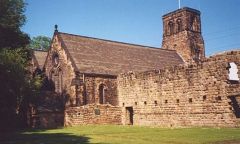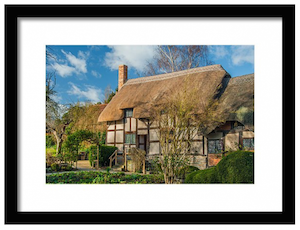Wearmouth, Jarrow nominated for World Heritage Status
Posted: 2011-01-25
The twin monasteries of Wearmouth and Jarrow, Tyne and Wear, have been named as Britain's official 2011 nominees for UNESCO World Heritage Site Status. Culture Secretary Jeremy Hunt made the announcement which named the historic monastic site as the choice, winning over a list of almost 40 nominees.
The full list of sites considered for nomination is as follows:
- Arbroath Abbey (Scotland)
- The Birmingham Jewellery Quarter (England)
- The Birth of the Railway Age serial nomination (England)
- Blackpool (England)
- The heroic period of civil and marine engineering in England 1822-1866, Bristol (England)
- Bronte Landscape and Haworth Village (England)
- Brunel’s Great Western Railway (England)
- Buildings of Charles Rennie Mackintosh, Glasgow (Scotland)
- Chatham Dockyard and its Defences (England)
- Chester Rows (England)
- Colchester, Camulodunum and Colonia Victricensis (England)
- Creswell Crags (England)
- The Hill of Derry (Northern Ireland)
- The Dover Strait (England)
- The Flow Country (Scotland)
- The Forth Bridge (Scotland)
- The Fountain Cavern (Anguilla)
- Gorham’s Cave (Gibraltar)
- Gracehill Conservation area (Northern Ireland)
- Jodrell Bank Observatory (England)
- The Lake District (England)
- The Laxey Valley (Isle of Man)
- Historic Lincoln (England)
- Malone and Stranmillis Historic Urban landscape (Northern Ireland)
- Merthyr Tydfil (Wales)
- Merton Priory (England)
- Mousa, Old Scatness and Jarlshof: The Crucible of Iron Age Shetland (Scotland)
- The Royal Sites of Ireland – Navan Fort (Northern Ireland)
- The Norfolk and Suffolk Broads (England)
- Slate Industry of North Wales (Wales)
- Offa’s Dyke (England/Wales border)
- St Andrews, Medieval Burgh and Links (Scotland)
- Island of Saint Helena (Saint Helena Island, South Atlantic Ocean)
- Turks and Caicos Islands (Caribbean)
- Tynwald Hill and environs – Norse assembly sites of North West Europe (Isle of Man)
- Former RAF Upper Heyford (England)
- Wye Valley and Forest of Dean (England/Wales border)
- City of York (England)
Wearmouth-Jarrow were founded in the 7th century on the edge of the North Sea. The monasteries quickly gained a reputation as a centre for learning, due in no small part to the contribution of the monk we know as The Venerable Bede. The monastic library at Jarrow was famed across Europe.
At the centre of the site are the churches of St Peters at Wearmouth, Sunderland, and St Paul's, Jarrow, where Bede lived.
If the bid to have Wearmouth-Jarrow named as a World Heritage site is successful, it will join an elite list of 28 sites across the UK already afforded WHS status by UNESCO. See the official World Heritage site for a full list of UK sites.
NB. Photo is © Ken Crosby, licensed for reuse under the Creative Commons Licence.
Resources:
The Venerable Bede
Jarrow Monastery
World Heritage Sites - the UNESCO list
<< Grosmont Church has oldest roof in Wales - Replica Roman Town House opens at Wroxeter >>
Attraction search


